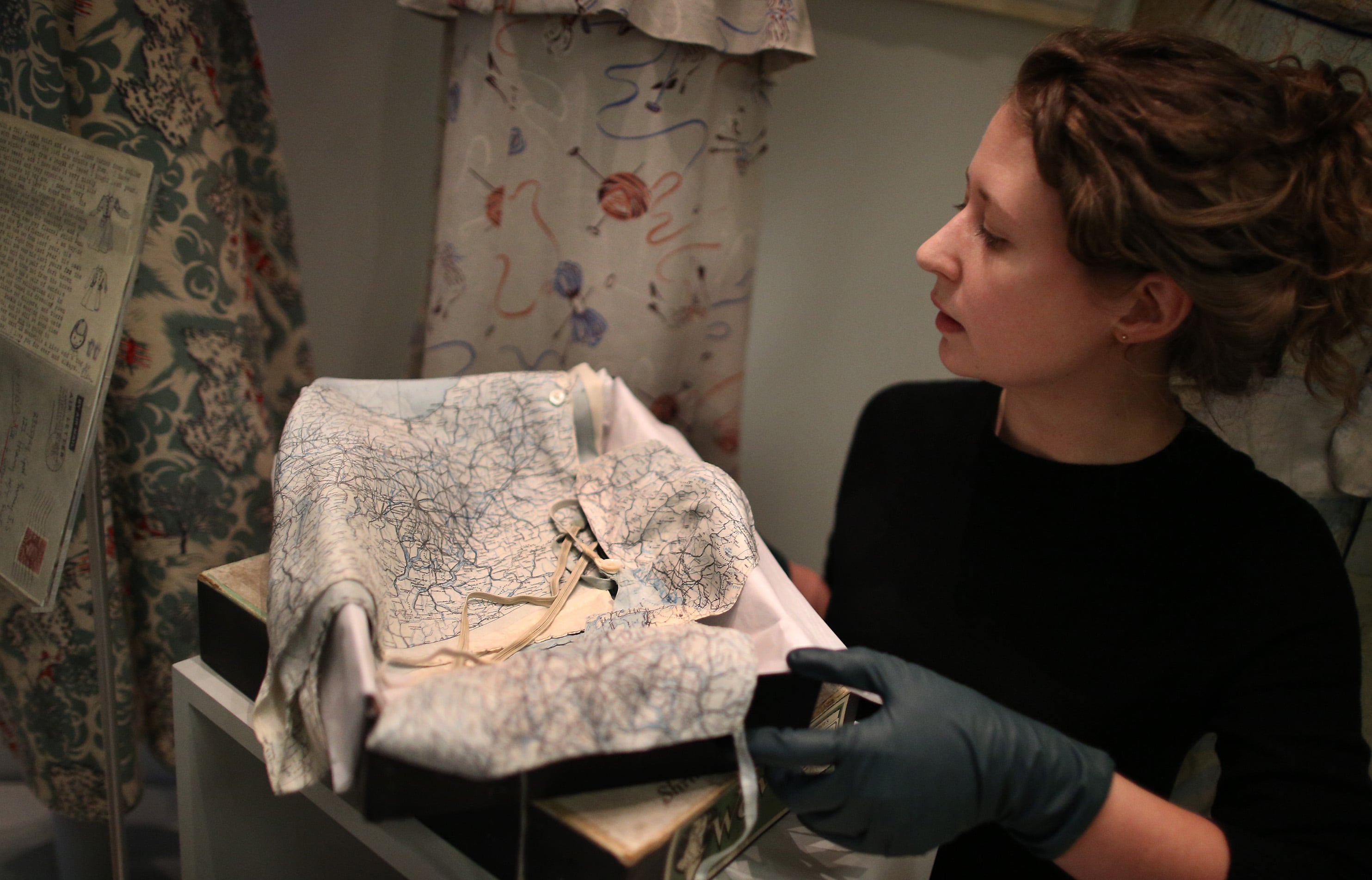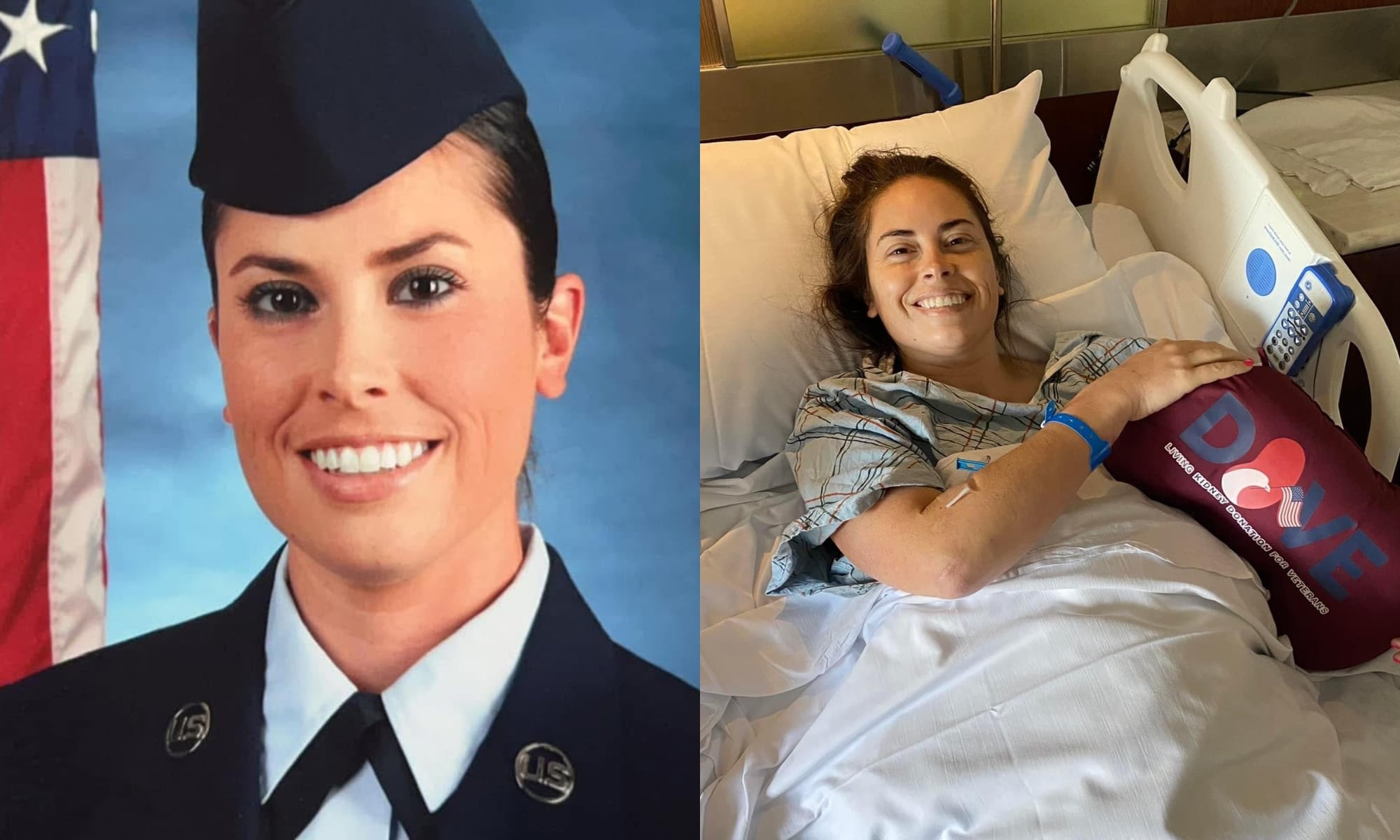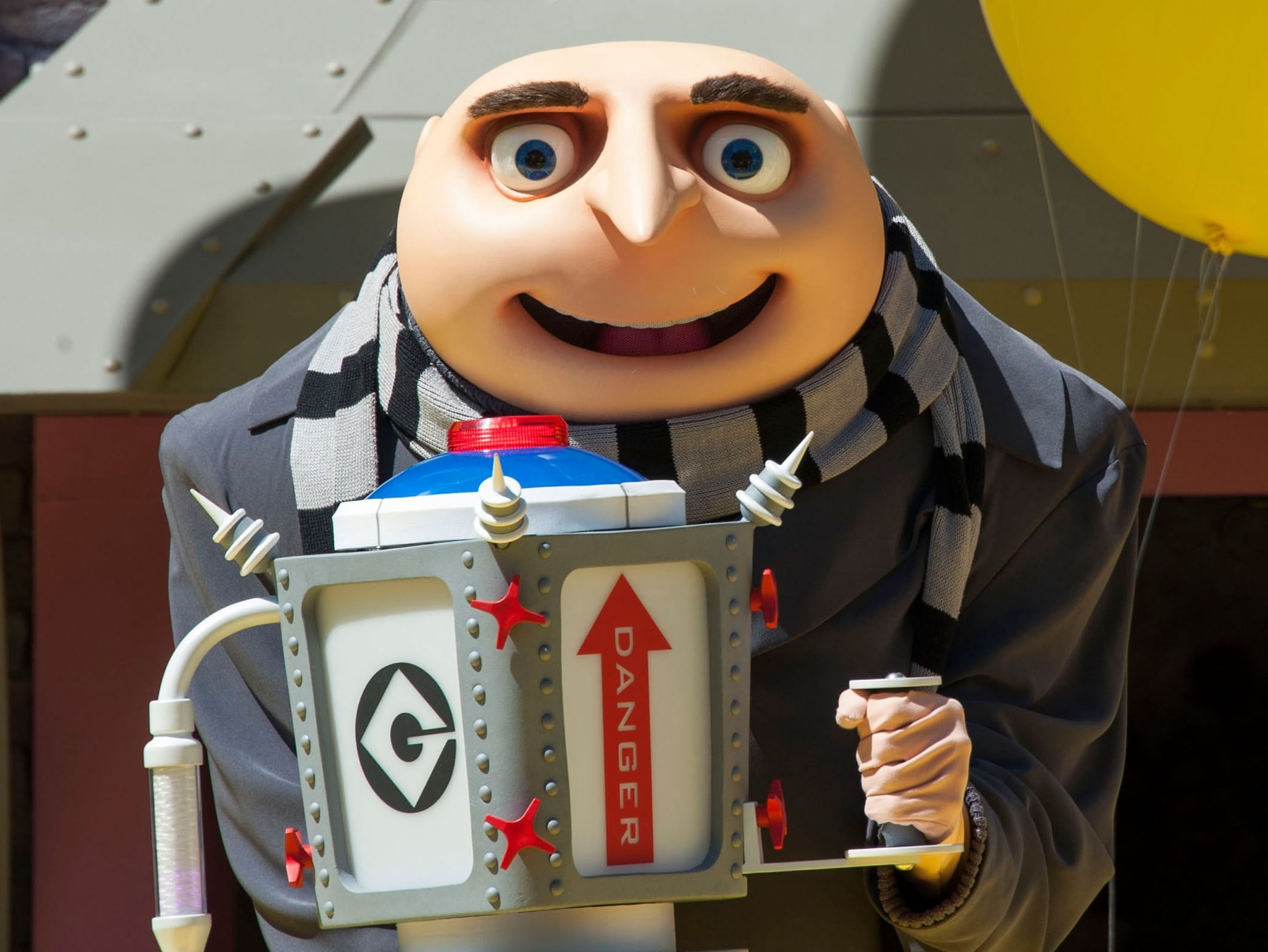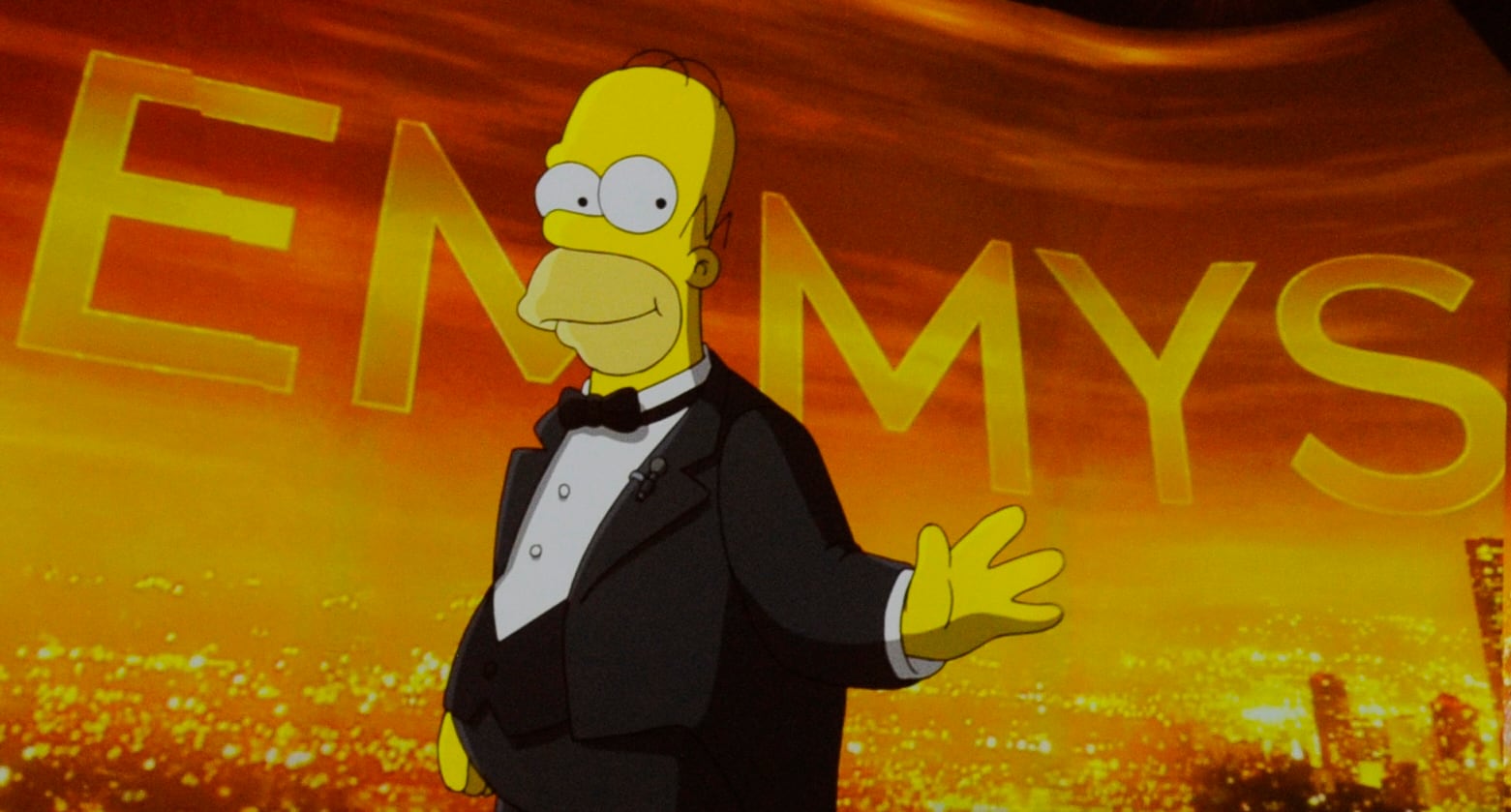Most brides opt to wear white on their wedding day. Some, like Bianca Jagger, might even rock a wedding suit. Then in 2016 there was Hester Cox, a U.K. bride who opted for neither as she strode down the aisle in a custom gown made from vintage World War II escape maps.
“I have never wanted a big white wedding but I did want to wear something special,” Cox told ABC News. “I’m an artist and I sometimes use maps in my work. I think they are fascinating.”
While Cox’s wedding dress is certainly unique by 21st century standards, she is some 70 years late to the fashion trend.
Invented by MI9 intelligence officer Christopher Hutton, some 3.5 million escape maps of Europe and the Pacific were created during WWII to assist Allied forces shot down or taken prisoner.
The maps were made primarily of silk — and sometimes rayon — due to the material’s lightweight nature and ability to be concealed in small places such a service buttons, pencil erasers, Monopoly boards, and the heels of shoes. Additionally, the guides could become damp without disintegrating and would not rustle upon opening — vital to avoid giving away the map carrier’s position.
Assisted by Wallace Ellison, a WWI veteran and an employee of one of the biggest silk manufacturers Brocklehurst Whiston Amalgamated, Hutton devised an ingenious way to ink the silk fabric and is credited with aiding over 750 Allied escapees during the war.
Brocklehurst Whiston Amalgamated was also aided by John Waddington Ltd, the company that incidentally manufactured Britain’s Monopoly boards, which helped to print the silk escape maps by the hundreds of thousands.
“Waddington’s in the pre-war era was printing on silk for theater programs,” Victor Watson, former chairman of the company, told ABC News. “For celebration events, for royalty and that kind of thing. It made a name for itself for being able to print on silk.”
Prior to missions, British airmen were instructed that if captured they should look for Monopoly boards and other games sent to them by charity groups. Under the guise of humanitarian care packages, Hutton and Waddington Ltd. assembled “escape kits” within the Monopoly boards themselves.
In cut-out compartments, POWs could find compasses, small metal tools, and most importantly, silk maps detailing their respective locations and paths to freedom. Airmen were told that “‘special edition’ Monopoly sets would be marked with a red dot on the free parking space,” according to ABC News.
“These voluntary gifts, designed for the comfort and entertainment of the prisoners, were flooding the camps from hundreds of sources,” Hutton wrote in “Official Secret: The Remarkable Story Of Escape Aids, Their Invention, Production, And The Sequel.”
“There was no valid reason why we should not take cover behind this multiplicity of well-wishers.”
By war’s end thousands of unused maps were released to Army Surplus Stores, and British women, still dealing with fabric scarcity due to war rationing, snapped them up to make clothes, underwear, and rompers for children.
Patricia Edwina Victoria Knatchbull, 2nd Countess Mountbatten of Burma, even got in on the patriotic trend when she received a silk map underwear set from her then-RAF beau.
According to Atlas Obscura, the maps on Cox’s wedding dress can be traced back to a former British Army officer who repurposed the original into a scarf.
“His son asked [Sara Jane] Murray, the [fashion] designer, to pass on photos of his parents to whoever ended up with his maps. [With] Cox [saying] it was extra special to know the origin of her garment.”
Claire Barrett is the Strategic Operations Editor for Sightline Media and a World War II researcher with an unparalleled affinity for Sir Winston Churchill and Michigan football.
Tags:
military fashionwwii map dresswwii map underwearwwii fashionfashion in the militarymilitary clothingsilk escape mapswwii escape mapsIn Other News















